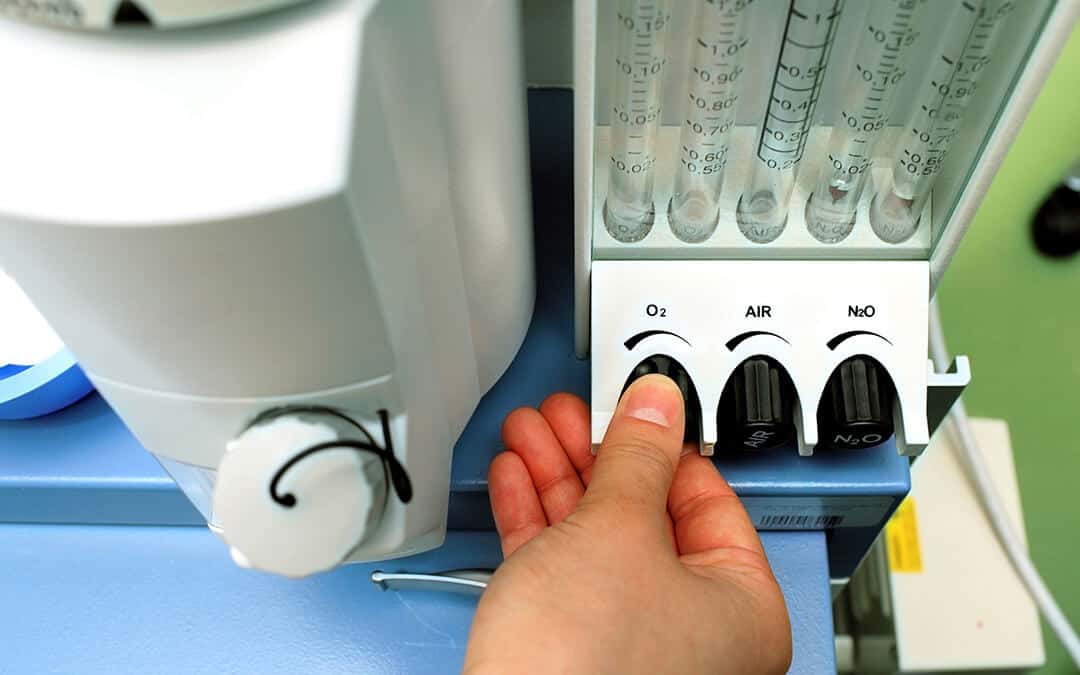Gases that are used during medical procedures are considered medical gases. Suitable for anesthetic and analgesic purposes, as well as for powering medical instruments and tools, medical gases are used in ICUs (intensive care units), operating and recovery rooms, dental offices, veterinary clinics, and various hospital wards – with a wide range of applications.
The most commonly used medical gases are oxygen, nitrogen, nitrous oxide, carbon dioxide, argon, helium, and compressed air. In a medical facility, each gas is supplied by a separate system that is designed to be gas-specific. Pressurized medical gases can be stored in cylinders, cryogenic vessels (for liquefied gases kept at low temperatures), and larger, regulated containment systems.
Compressed at levels appropriate to their chemical properties – and intended uses – medical gases are usually administered to patients through cannulas and face masks, to be breathed in from a concentrator, a ventilator, or other medical machine. Let’s look at some of the most common applications for medical gases today.

Oxygen
Used in most health care environments, oxygen is a life-sustaining gas that is administered to treat a variety of respiratory conditions, including asthma, COPD (chronic obstructive pulmonary disease), pneumonia, heart failure, cystic fibrosis, and COVID-19. When the lungs are unable to draw enough oxygen into the bloodstream, blood oxygen levels drop, which can lead to organ failure. Supplemental oxygen helps restore blood oxygen to normal levels. In medical use for more than a hundred years, oxygen remains the most common medical gas administered today.
Nitrogen
In gas form, nitrogen can be used to power medical tools and surgical equipment in settings without a source of instrument air. In a liquefied state, nitrogen is cold enough for application during cryosurgical procedures – to freeze and remove, on contact, unwanted skin lesions or diseased tissue. As a cryogenic storage material, liquid nitrogen can be used to preserve samples of blood, tissue, and other biological specimens – preventing oxidation that could otherwise damage the samples.
Nitrous Oxide
Nitrous oxide is a variant of nitrogen that, when mixed with oxygen, acts as an anesthetic and analgesic agent during surgical and dental procedures. Nitrous oxide is also known as laughing gas, due to the euphoric sensations it can produce upon inhalation. The relaxing, pain-relieving properties of nitrous oxide have been recognized for more than 200 years. As a medical gas, it remains a staple in dentist offices and operating rooms around the world.

Carbon Dioxide
During colonoscopies, laparoscopic procedures, and open-heart surgeries, carbon dioxide is used to inflate the colon, the abdomen, and other body cavities. These insufflations give surgeons greater visibility of – and access to – surgical areas. Carbon dioxide can also provide respiratory stimulation, when mixed with oxygen, during and after administration of anesthesia. As a cryogen, carbon dioxide can be used in routine cryotherapy treatments, to remove skin tags, warts, and moles.
Argon and Helium
Argon and helium provide medical use as drivers for gas knives and other air-powered surgical instruments. When helium is mixed with normal breathing air, heliox is created. Heliox administration brings relief to patients experiencing impaired lung function, and is an effective treatment for asthma, COPD, vocal cord disruption, and upper airway obstruction.
Compressed Air
Also known as instrument air, compressed air is used to power ventilators, as well as surgical tools and orthopedic instruments. It can also make pneumatic medical equipment – surgery tables, for example – operational. Compressed air is used to support a variety of medical gas distribution systems in hospitals and health care facilities.
CalOx supplies medical gases to meet a range of health care needs. Contact us to learn more about our medical gas delivery services.
